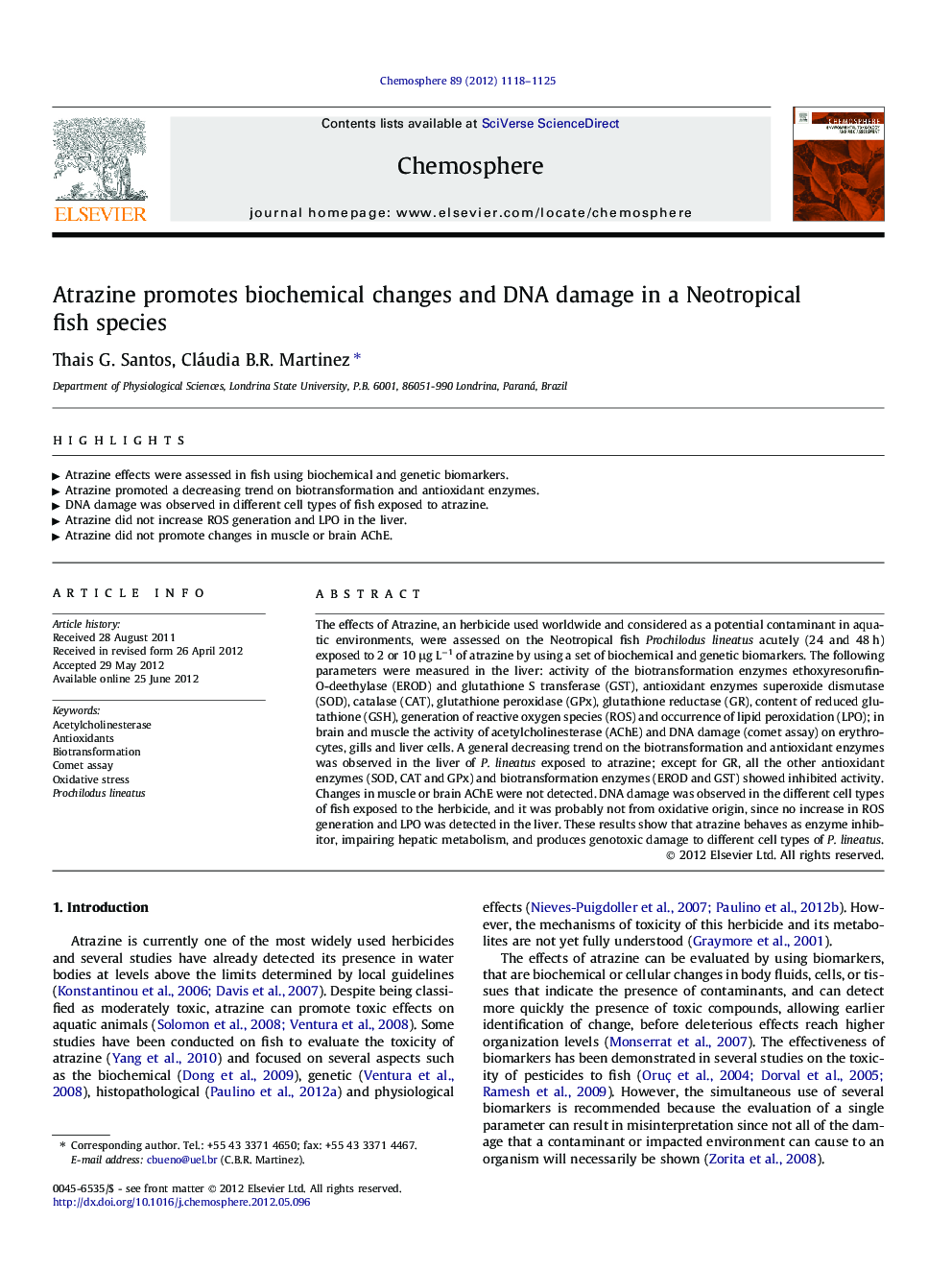| Article ID | Journal | Published Year | Pages | File Type |
|---|---|---|---|---|
| 4409825 | Chemosphere | 2012 | 8 Pages |
The effects of Atrazine, an herbicide used worldwide and considered as a potential contaminant in aquatic environments, were assessed on the Neotropical fish Prochilodus lineatus acutely (24 and 48 h) exposed to 2 or 10 μg L−1 of atrazine by using a set of biochemical and genetic biomarkers. The following parameters were measured in the liver: activity of the biotransformation enzymes ethoxyresorufin-O-deethylase (EROD) and glutathione S transferase (GST), antioxidant enzymes superoxide dismutase (SOD), catalase (CAT), glutathione peroxidase (GPx), glutathione reductase (GR), content of reduced glutathione (GSH), generation of reactive oxygen species (ROS) and occurrence of lipid peroxidation (LPO); in brain and muscle the activity of acetylcholinesterase (AChE) and DNA damage (comet assay) on erythrocytes, gills and liver cells. A general decreasing trend on the biotransformation and antioxidant enzymes was observed in the liver of P. lineatus exposed to atrazine; except for GR, all the other antioxidant enzymes (SOD, CAT and GPx) and biotransformation enzymes (EROD and GST) showed inhibited activity. Changes in muscle or brain AChE were not detected. DNA damage was observed in the different cell types of fish exposed to the herbicide, and it was probably not from oxidative origin, since no increase in ROS generation and LPO was detected in the liver. These results show that atrazine behaves as enzyme inhibitor, impairing hepatic metabolism, and produces genotoxic damage to different cell types of P. lineatus.
► Atrazine effects were assessed in fish using biochemical and genetic biomarkers. ► Atrazine promoted a decreasing trend on biotransformation and antioxidant enzymes. ► DNA damage was observed in different cell types of fish exposed to atrazine. ► Atrazine did not increase ROS generation and LPO in the liver. ► Atrazine did not promote changes in muscle or brain AChE.
